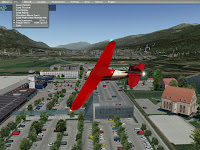MANILA, Philippines - The Philippines and Australia have agreed to new air service arrangements, opening the way for expanded services on routes between the two countries, the Australian Embassy in Manila disclosed.
Under the new arrangements, Australian and Philippine airlines are now able to offer up to 4,000 seats each way per week between major Australian destinations (Brisbane, Melbourne, Perth and/or Sydney) and Manila and/or Clark in the Philippines.
Over time, and in response to demand, the new limit can be increased to 6,000 seats. Previously, the limit was 2,500 seats.
To encourage airlines to serve important regional destinations, Australian and Philippine airlines can now operate unlimited services to regional airports.
Australian Ambassador to the Philippines Rod Smith welcomed the new arrangements.
Last year, over 313,000 people travelled between the Philippines and Australia.
“The new arrangements are a good example of Australia and the Philippines working together to liberalize international aviation to the benefit of the travelling public, the tourism industry and airline carriers in both Australia and the Philippines,” Smith said.
Meantime, the Australian government recently provided the Philippine Office for Transportation Security (OTS) with training equipment for the Aviation Security Training Center, strengthening the country’s capacity to secure its aviation system.
“The assistance seeks to enhance transport security measures across the country and reduce the vulnerability of transport systems to security threats,” Smith said.
The training facility equipment is part of Australia’s continuing security capacity building support that will enable the Philippine OTS to standardize training and application of aviation security measures across the Philippines.
The program also funded the training of Philippine aviation security officials on International Civil Aviation Organization (ICAO) courses at accredited facilities in Kuala Lumpur, Hong Kong and Auckland. This training has built the subject expertise of aviation security managers, technical personnel and training staff.
“The assistance will significantly increase the capacity of the Philippine OTS to conduct aviation security training both in Manila and other regional airports throughout the country,” he added.
Australian Office of Transport Security Executive Director Paul Retter and Philippine OTS Director, Col. Lucas Cauton (designated Officer-in-Charge), formally signed a Deed of Donation that marked the official turnover of the equipment on 2 March 2009. During the ceremony, Retter was presented a plaque of appreciation from Undersecretary Cecilio Penilla, Philippine OTS Administrator, for his role in assisting the Philippine Government.
“Australia’s assistance will further develop the Philippine OTS capability to safeguard aviation against possible threats using internationally-recognized ICAO standards,” Cauton said.
Australia and the Philippines share a strong bilateral defense and security relationship that aims to counter global and regional threats. Since 2006, Australia has committed up to P10.9 million (A$340,000) for the implementation of a broader range of aviation security assistance measures to safeguard the long-term security of Philippine aviation and the travelling public.










